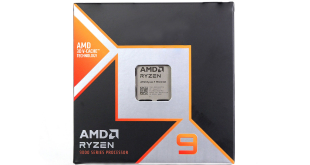As you'll have seen on the previous page, Asus have used the same excellent UEFI interface for the M5A99X-EVO that they use on many of their motherboards. This makes the overclocking process quite simple indeed.
First of all we tried out the automatic overclocking function that Asus has devised. This can be found on the ‘AI Tweaker' page of the UEFI interface along with all of the other settings for overclocking. This managed to overclock the FX-8120 to 3.875 GHz using a baseclock of 250 MHz and a multiplier of 15.5x for an overclock of 775 Mhz.
See validation here.
For those who aren't confident enough to manually overclock their CPU, the automatic overclocking function will provide quite a significant boost in performance.
We had mixed success when overclocking the FX-8120 manually. We managed to push the CPU to 4.2 GHz using a baseclock of 200 MHz and a multiplier of 21x without adjusting the voltages at all. This is also very simple for less advanced users and is the setting we used for our overclocked benchmark results.
See validation here.
Unfortunately 4.2 GHz seemed to be the limitation of this particular chip as we weren't able to achieve a completely stable overclock higher than this, even when using very high volts of 1.40 – 1.45V.
We were able to achieve higher overclocks which were stable with Prime95 however different types of benchmark such as 3DMark or Cinebench would cause random instability.
We also tried the FX-8120 with a ASRock 990FX Fatal1ty motherboard and HD 6670 and experienced the same 4.2 GHz stability limit with this chip.
So we decided to see how far we could push the FX-8120 in the 990FX Fatal1ty while still getting our system to boot. We managed to achieve a massive 2000 MHz overclock, giving us 5.1 GHz using a baseclock of 200, multiplier of 25.5x and core voltage of 1.475v. We tested with Cinebench for a minute without encountering stability issues. We would be lying to claim it was usable 24/7 however.
See validation here.
For comparison purposes we overclocked our i5-2500K to 4.2 GHz to give a clock-by-clock comparison with the FX-8120. We also tested the i5-2500K at 4.7 GHz which is the highest we've been able to achieve with this particular i5-2500K chip.
These two settings cover two scenarios. The first being a solid overclock of 4.2ghz, easily achievable with stock air cooling and limited bios knowledge. Then 4.7ghz which requires increased core voltage and enhanced cooling.
See Validations for 4.2 GHz here and 4.7 GHz here.
 KitGuru KitGuru.net – Tech News | Hardware News | Hardware Reviews | IOS | Mobile | Gaming | Graphics Cards
KitGuru KitGuru.net – Tech News | Hardware News | Hardware Reviews | IOS | Mobile | Gaming | Graphics Cards







I wouldnt touch AMD for a processor/motherboard combo. They arent bad chips but Intel are competitvely priced and faster. AMD should drop prices by 20%.
amd is running a uk cashback deal on the fx and a series at the moment. they’re calling it “more cores – more cashback” or something really similar.
10£ for a quad core, 15 for hexa, and 20 for octo. this would bring the price to 115£. furthermore, im pretty damn sure that you should be able to find a better deal on it than 135£, and the cashback is directly from amd, so i doubt the choice of retailer will matter much.
Yeah it was posted yesterday http://www.kitguru.net/components/cpu/kgnewsbot/amd-to-give-money-back-for-buying-fx-and-apu-processors/
its still not enough.
And the deal doesnt help americans. im pissed off , I bought a FX8150 a few weeks ago and it should be $15 less already. they are too expensive but im an AMD loyalist, although that might change soon if they look after customers like this.
I like their processors, they are good value for money
horribly inefficient. twice the physical cores for less performance at the same price, with higher power consumption. its a win !
@WarrenUK
You are wrong here. First of all, AMD has 2x the integer core count . Where FX8120 loses to 2500K is in FP intensive workloads. No surprise there since FX has ONE FP unit per core pair,thus 4 FP units in “octo” core chip. Each of these units is on par (execution resources wise) as each of 2500K cores(Which have unified scheduler for integer and fp ops).
So to sum up:
FX8120 : 3.1Ghz stock clock,3.4Ghz all core turbo,4.2Ghz single core turbo. 8 integer cores,4 FP units each of which is 256bits wide(1×256 or 2x128bit depending on ISA).If AVX is used AMD can execute 4x256bit AVX ops.If FMA4 is used it can double the effective throughput putting it on par with 2500K’s AVX256bit throughput(only in this case).
2500K : 3.3Ghz stock clock,3.5?Ghz all core turbo,3.7Ghz single core turbo,4 integer cores;4 FP cores each of which can do 1x128bit ADD and 1x128bit MUL so 256bits wide in SSE code. If AVX is used intel 2500K can execute 4x2x256bits of FP ops in theory.
I hope you see now why FX8xxx series perform like this in some(not all!) FP/SSE heavy workloads. They just have 2x less FP resources than they have integer cores. This is AMD’s design choice since server workloads are mostly integer heavy and those who need FP performance for their HPC server will do a recompile for FMA4/3 path and achieve better performance this way. Desktop users can’t do anything tho,they will have to wait for Steamroller core for more FP performance ;).
Overall,given above limitations FX has,it(FX8120) performs pretty well for its price versus “fat core” design such is 2500K. Not a bad showing when you consider lower stock clock FX has.
The background picture is makes it looks like the items on the top(AMD in this case) have lower performance.
is there any laptops having “fx” series amd processors??if you are having any info about this then please text me via email: sonchhatrajay@yahoo.com..
thank you..
aguante amd loco…